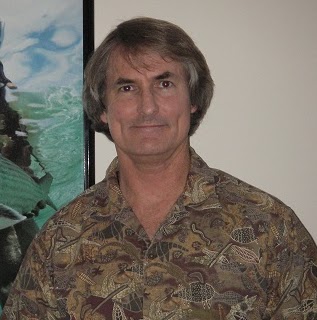John T Ackerman
age ~65
from Rapid City, SD
- Also known as:
-
- John Thomas Ackerman
- Thomas T Ackerman
- Tom T Ackerman
- Monica Ackerman
- Alayna Ackerman
John Ackerman Phones & Addresses
- Rapid City, SD
- Aurora, IL
- Ellsworth AFB, SD
- Conklin, MI
- 1615 West Blvd, Rapid City, SD 57701 • (605)3437286
Work
-
Position:Food Preparation and Serving Related Occupations
Education
-
Degree:High school graduate or higher
Languages
English
Specialities
Audiology
Lawyers & Attorneys
License Records
John Ackerman
License #:
55557 - Expired
Category:
Professional
Issued Date:
Oct 2, 2013
Expiration Date:
Sep 6, 2015
Medicine Doctors

John L Ackerman, Muskegon MI
view sourceSpecialties:
Audiology
Address:
427 Seminole Rd Suite 101, Muskegon, MI 49444
(231)7332008 (Phone), (231)7332010 (Fax)
(231)7332008 (Phone), (231)7332010 (Fax)
Languages:
English

John Lionel Ackerman, Norton Shores MI
view sourceSpecialties:
Audiologist
Address:
427 Seminole Rd, Norton Shores, MI 49444
Wikipedia References

John M. Ackerman
Isbn (Books And Publications)

Practice and Procedure of the International Criminal Tribunal for the Former Yugoslavia: With Selected Materials from the International Criminal Tribunal for Rwanda
view sourceAuthor
John E. Ackerman
ISBN #
9041114785


Writers at Work: Strategies for Communications in Business and Professional Settings
view sourceAuthor
John Ackerman
ISBN #
0155000071





Name / Title
Company / Classification
Phones & Addresses
Co-Owner
Hear Michigan, Inc.
Audiologists. Hearing Aids & Assistive Devices
Audiologists. Hearing Aids & Assistive Devices
549 Seminole Rd STE 102, Norton Shores, MI 49444
(231)7332008
(231)7332008
Co-Owner, Principal, Secretary, Vice-President
Hear Michigan, Inc
Health Practitioner's Office
Health Practitioner's Office
549 Seminole Rd STE 102, Muskegon, MI 49444
(231)7332008
(231)7332008
NORTH COAST SPORTS MARKETING, INC
RED TRUCK RETRIEVERS INC
FREDERICKTOWN COMMUNITY MEDICAL AND ARTIFACTS MUSEUM, LLC
PRODUCTION REJUVENATION OPTIONS, LLC
KNOX RESOURCES CORP
JOHN B. ACKERMAN INSURANCE AGENCY, LLC
Us Patents
-
Three-Electrode Metal Oxide Reduction Cell
view source -
US Patent:6911134, Jun 28, 2005
-
Filed:Sep 6, 2002
-
Appl. No.:10/236133
-
Inventors:Dennis W. Dees - Downers Grove IL, US
John P. Ackerman - Downers Grove IL, US -
Assignee:The University of Chicago - Chicago IL
-
International Classification:C25C005/04
C25C003/34 -
US Classification:205 43, 205 47, 205354, 205363, 205367, 205368
-
Abstract:A method of electrochemically reducing a metal oxide to the metal in an electrochemical cell is disclosed along with the cell. Each of the anode and cathode operate at their respective maximum reaction rates. An electrolyte and an anode at which oxygen can be evolved, and a cathode including a metal oxide to be reduced are included as is a third electrode with independent power supplies connecting the anode and the third electrode and the cathode and the third electrode.
-
Three-Electrode Metal Oxide Reduction Cell
view source -
US Patent:7410561, Aug 12, 2008
-
Filed:Mar 21, 2005
-
Appl. No.:11/084940
-
Inventors:Dennis W. Dees - Downers Groves IL, US
John P. Ackerman - Downers Grove IL, US -
Assignee:UChicago Argonne, LLC - Chicago IL
-
International Classification:C25C 5/04
C25C 3/34 -
US Classification:205 43, 205368, 2042307, 2042431
-
Abstract:A method of electrochemically reducing a metal oxide to the metal in an electrochemical cell is disclosed along with the cell. Each of the anode and cathode operate at their respective maximum reaction rates. An electrolyte and an anode at which oxygen can be evolved, and a cathode including a metal oxide to be reduced are included as is a third electrode with independent power supplies connecting the anode and the third electrode and the cathode and the third electrode.
-
Uranium Dioxide Electrolysis
view source -
US Patent:7638026, Dec 29, 2009
-
Filed:Aug 24, 2005
-
Appl. No.:11/215202
-
Inventors:James L. Willit - Batavia IL, US
John P. Ackerman - Prescott AZ, US
Mark A. Williamson - Naperville IL, US -
Assignee:The United States of America as represented by the United States Department of Energy - Washington DC
-
International Classification:C25C 3/34
-
US Classification:205 47, 2042431, 204244, 204247, 205 43
-
Abstract:This is a single stage process for treating spent nuclear fuel from light water reactors. The spent nuclear fuel, uranium oxide, UO, is added to a solution of UCldissolved in molten LiCl. A carbon anode and a metallic cathode is positioned in the molten salt bath. A power source is connected to the electrodes and a voltage greater than or equal to 1. 3 volts is applied to the bath. At the anode, the carbon is oxidized to form carbon dioxide and uranium chloride. At the cathode, uranium is electroplated. The uranium chloride at the cathode reacts with more uranium oxide to continue the reaction. The process may also be used with other transuranic oxides and rare earth metal oxides.
-
Salt Transport Extraction Of Transuranium Elements From Lwr Fuel
view source -
US Patent:51603675, Nov 3, 1992
-
Filed:Oct 3, 1991
-
Appl. No.:7/770385
-
Inventors:R. Dean Pierce - Naperville IL
John P. Ackerman - Downers Grove IL
James E. Battles - Oak Forest IL
Terry R. Johnson - Wheaton IL
William E. Miller - Naperville IL -
Assignee:The United States of America as represented by the United States
Department of Energy - Washington DC -
International Classification:C22B 6000
-
US Classification:75397
-
Abstract:A process of separating transuranium actinide values from uranium values present in spent nuclear oxide fuels which contain rare earth and noble metal fission products. The oxide fuel is reduced with Ca metal in the presence of CaCl. sub. 2 and a Cu--Mg alloy containing not less than about 25% by weight Mg at a temperature in the range of from about 750. degree. C. to about 850. degree. C. to precipitate uranium metal and some of the noble metal fission products leaving the Cu--Mg alloy having transuranium actinide metals and rare earth fission product metals and some of the noble metal fission products dissolved therein. The CaCl. sub. 2 having CaO and fission products of alkali metals and the alkali earth metals and iodine dissolved therein is separated and electrolytically treated with a carbon electrode to reduce the CaO to Ca metal while converting the carbon electrode to CO and CO. sub. 2. The Ca metal and CaCl. sub. 2 is recycled to reduce additional oxide fuel.
-
Method Of Preparing Electrolyte For Use In Fuel Cells
view source -
US Patent:41156323, Sep 19, 1978
-
Filed:May 5, 1977
-
Appl. No.:5/794295
-
Inventors:Kimio Kinoshita - Downers Grove IL
John P. Ackerman - Downers Grove IL -
Assignee:The United States of America as represented by the United States
Department of Energy - Washington DC -
International Classification:H01M 800
H01M 814 -
US Classification:429188
-
Abstract:An electrolyte compact for fuel cells includes a particulate support material of lithium aluminate that contains a mixture of alkali metal compounds, such as carbonates or hydroxides, as the active electrolyte material. The porous lithium aluminate support structure is formed by mixing alumina particles with a solution of lithium hydroxide and another alkali metal hydroxide, evaporating the solvent from the solution and heating to a temperature sufficient to react the lithium hydroxide with alumina to form lithium aluminate. Carbonates are formed by reacting the alkali metal hydroxides with carbon dioxide gas in an exothermic reaction which may proceed simultaneously with the formation with the lithium aluminate. The mixture of lithium aluminate and alkali metal in an electrolyte active material is pressed or otherwise processed to form the electrolyte structure for assembly into a fuel cell.
-
Uranium Chloride Extraction Of Transuranium Elements From Lwr Fuel
view source -
US Patent:51417235, Aug 25, 1992
-
Filed:Oct 3, 1991
-
Appl. No.:7/770386
-
Inventors:William E. Miller - Naperville IL
John P. Ackerman - Downers Grove IL
James E. Battles - Oak Forest IL
Terry R. Johnson - Wheaton IL
R. Dean Pierce - Naperville IL -
Assignee:The United States of America as represented by the United States
Department of Energy - Washington DC -
International Classification:C22B 6002
-
US Classification:423 5
-
Abstract:A process of separating transuranium actinide values from uranium values present in spent nuclear oxide fuels containing rare earth and noble metal fission products as well as other fission products is disclosed. The oxide fuel is reduced with Ca metal in the presence of Ca chloride and a U-Fe alloy which is liquid at about 800. degree. C. to dissolve uranium metal and the noble metal fission product metals and transuranium actinide metals and rare earth fission product metals leaving Ca chloride having CaO and fission products of alkali metals and the alkali earth metals and iodine dissolved therein. The Ca chloride and CaO and the fission products contained therein are separated from the U-Fe alloy and the metal values dissolved therein. The U-Fe alloy having dissolved therein reduced metals from the spent nuclear fuel is contacted with a mixture of one or more alkali metal or alkaline earth metal halides selected from the class consisting of alkali metal or alkaline earth metal and Fe or U halide or a combination thereof to transfer transuranium actinide metals and rare earth metals to the halide salt leaving the uranium and some noble metal fission products in the U-Fe alloy and thereafter separating the halide salt and the transuranium metals dissolved therein from the U-Fe alloy and the metals dissolved therein.
-
Plutonium Recovery From Spent Reactor Fuel By Uranium Displacement
view source -
US Patent:50965450, Mar 17, 1992
-
Filed:May 21, 1991
-
Appl. No.:7/703641
-
Inventors:John P. Ackerman - Downers Grove IL
-
Assignee:The United States of America as represented by the United States
Department of Energy - Washington DC -
International Classification:C25C 334
-
US Classification:204 15
-
Abstract:A process for separating uranium values and transuranic values from fission products containing rare earth values when the values are contained together in a molten chloride salt electrolyte. A molten chloride salt electrolyte with a first ratio of plutonium chloride to uranium chloride is contacted with both a solid cathode and an anode having values of uranium and fission products including plutonium. A voltage is applied across the anode and cathode electrolytically to transfer uranium and plutonium from the anode to the electrolyte while uranium values in the electrolyte electrolytically deposit as uranium metal on the solid cathode in an amount equal to the uranium and plutonium transferred from the anode causing the electrolyte to have a second ratio of plutonium chloride to uranium chloride. Then the solid cathode with the uranium metal deposited thereon is removed and molten cadmium having uranium dissolved therein is brought into contact with the electrolyte resulting in chemical transfer of plutonium values from the electrolyte to the molten cadmium and transfer of uranium values from the molten cadmium to the electrolyte until the first ratio of plutonium chloride to uranium chloride is reestablished.
-
Electrorefining Process And Apparatus For Recovery Of Uranium And A Mixture Of Uranium And Plutonium From Spent Fuels
view source -
US Patent:48805068, Nov 14, 1989
-
Filed:Nov 5, 1987
-
Appl. No.:7/117880
-
Inventors:John P. Ackerman - Downers Grove IL
William E. Miller - Naperville IL -
Assignee:The United States of America as represented by the Department of Energy - Washington DC
-
International Classification:C25C 334
-
US Classification:204 15
-
Abstract:An electrorefining process and apparatus for the recovery of uranium and a mixture of uranium and plutonium from spent fuel using an electrolytic cell having a lower molten cadmium pool containing spent nuclear fuel, an intermediate electrolyte pool, an anode basket containing spent fuel, and two cathodes, the first cathode composed of either a solid alloy or molten cadmium and the second cathode composed of molten cadmium. Using this cell, additional amounts of uranium and plutonium from the anode basket are dissolved in the lower molten cadmium pool, and then substantially pure uranium is electrolytically transported and deposited on the first alloy or molten cadmium cathode. Subsequently, a mixture of uranium and plutonium is electrotransported and deposited on the second molten cadmium cathode.
Plaxo

John Ackerman
view sourceOslo, NORWAYCEO at Nicarnica AS Past: VP Sales and Marketing at lenco software / mapcube, Director of Marketing and Channel...

John Ackerman
view sourcePast: Technical Writer at Cisco Systems

John E. Ackerman
view sourceOWNER at JOHN E. ACKERMAN, CPA
Myspace

John Ackerman
view sourceLocality:
Heaven, Australian Capital Territory
Gender:
Male
Birthday:
1949
Flickr
News

Teen suicide: girls are now poisoning themselves at alarming rates. There are ways to help.
view source- The results are a wake-up call to the unsettling scope of the suicide crisis among teens in the United States. Deaths, says John Ackerman, a study co-author and Suicide Prevention Coordinator at Nationwide Childrens Hospital, are just the tip of the iceberg of pain. Underneath that, you got atte
- Date: May 01, 2019
- Category: Health
- Source: Google

"13 Reasons Why" TV show sensationalizes teen suicide, schools warn parents
view source- "The reasons range from bullying, starting rumors, sharing compromising social media images, shaming, failing to stand up for her, sexual assault, and not noticing the warning signs of impending suicide," explains a column cited by the districts written by John Ackerman, a psychologist for the Cente
- Date: Apr 29, 2017
- Category: Entertainment
- Source: Google

DFW Airport To Add Daily Flights to Montreal
view source- Canada continues to be an important trading partner for our region and we are pleased that they have chosen to expand their network from DFW with a new flight to Montral,, said John Ackerman, Executive Vice President of Global Strategy and Development for DFW Airport.
- Date: Dec 08, 2016
- Category: Business
- Source: Google

Mexico's missing students: Will case prove a tipping point?
view source- What is emerging, argues John Ackerman, a law professorat the National Autonomous University of Mexico, isan explosive synthesis of three previous social movements that were each "important but were left only partially resolved and still bubbling under the surface. Victims of the drug war, a st
- Date: Nov 06, 2014
- Category: World
- Source: Google

One town has its hand in 1000s of pumpkin pies
view source- quite everything in Morton, but they mean a lot to the former farming town providing an annual festival, about 150 seasonal cannery jobs and another 50 or so year-round in this town of 16,000. Pumpkins give Morton an identity beyond being a bedroom community for nearby Peoria, said John Ackerman. H
- Date: Oct 04, 2014
- Source: Google

Season for pie: Inside the outfit that's behind 85% of the canned pumpkin ...
view source- ite everything in Morton, but they mean a lot to the former farming town providing an annual festival, about 150 seasonal cannery jobs and another 50 or so year-round in this town of 16,000. Pumpkins give Morton an identity beyond being a bedroom community for nearby Peoria, said John Ackerman. He
- Date: Oct 04, 2014
- Category: U.S.
- Source: Google

Pumpkin farmers have smashing crop despite drought
view source- drought forced thousands of ranchers to sell off cattle because pastures were too dry to graze, and corn and soybean farmers watched their plants wither in the summer sun. But John Ackerman said most of the pumpkins he planted fared "fantastic" for a simple, single reason: Pumpkins dig dry weather.
- Date: Oct 10, 2012
- Category: U.S.
- Source: Google

Irregularities reveal Mexico's election far from fair
view source- John Ackerman rightly criticized President Obama for congratulating Pea Nieto as the winner before the official results were in. This was similar to the Bush administration's efforts to aid Caldern in 2006, which began immediately after the vote. The Caldern campaign to establish his "victory" as
- Date: Jul 09, 2012
- Category: World
- Source: Google

John G Ackerman
view source
John Ackerman Sr
view source
John Ackerman
view source
John Ackerman
view source
John Ackerman
view source
John A. Ackerman
view source
John Ackerman
view source
Matthew John Ackerman
view sourceClassmates

John Ackerman
view sourceSchools:
Munhall High School Munhall PA 1951-1955
Community:
Charlene Myers, Judee Palko

John Ackerman
view sourceSchools:
North Central High School Indianapolis IN 1972-1976

John Ackerman
view sourceSchools:
Woodsfield High School Woodsfield OH 1966-1970
Community:
Sally Gabel, Faye Yoho, Kim Thompson, Robin Groves, Pamela Rhoden, Ann Hunter

John Ackerman
view sourceSchools:
Newton Falls High School Newton Falls OH 1962-1966
Community:
Duanne Decker, Edith Edie

John Ackerman
view sourceSchools:
Bethalto High School Bethalto IL 1959-1963
Community:
Tom Garber, Monica Moffet

John Ackerman
view sourceSchools:
St. Clement High School Center Line MI 1947-1958
Community:
Jim Liebig

John Ackerman
view sourceSchools:
St. Clement High School Center Line MI 1986-1990
Community:
Jim Liebig

John Gonzalez (Ackerman)
view sourceSchools:
La Paloma Elementary School Fallbrook CA 1998-2002, James E. Potter Intermediate School Fallbrook CA 2002-2003
Community:
Arlene Love, Sandra Billett, Denise Fleener, Robert Jensen, Nancy King
Googleplus

John Ackerman
Education:
American University - Political Science

John Ackerman

John Ackerman

John Ackerman

John Ackerman

John Ackerman

John Ackerman

John Ackerman
Youtube
Get Report for John T Ackerman from Rapid City, SD, age ~65

















